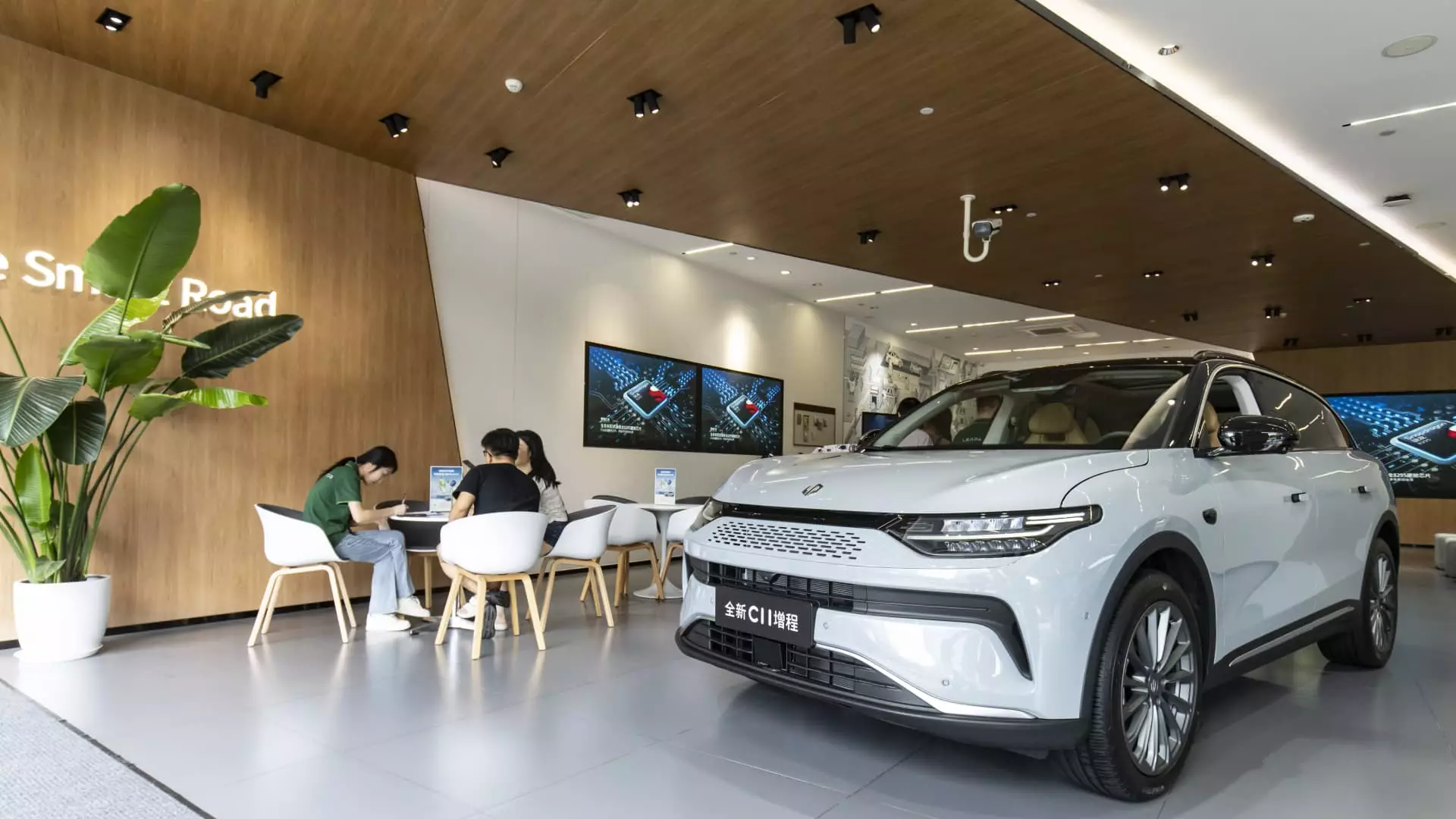As the landscape of the automotive industry continues to evolve, China’s vehicle market is undergoing a significant transformation. The latest data illustrates a robust preference for hybrid-powered vehicles over purely battery-operated ones, marking a decisive shift from traditional gasoline engines. In 2024, BYD, the leading manufacturer in the country, revealed impressive figures, with approximately 4.3 million cars sold. A substantial portion of these, around 2.5 million, were hybrid-powered vehicles, indicating a major shift from the previous year when the balance tipped in favor of battery-only models.
Consumers in China are not only abandoning gasoline-powered cars but are also increasingly drawn to hybrids, which provide the convenience of both electric and internal combustion systems. This trend aligns with the broader global move towards more sustainable transportation solutions. Tesla, which predominantly offers battery-only vehicles, is also thriving in this market, expected to sell over 600,000 cars for the second consecutive year. This underlines the dual nature of consumer preferences in China: while there is a solid base of electric vehicle enthusiasts, a considerable demand remains for hybrid models that promise range and flexibility.
BYD’s strategic pivot towards hybrids has solidified its position against competitors like Tesla and Li Auto, which has reported landmark deliveries of over 500,000 vehicles last year, mainly consisting of hybrid models. This affinity for hybrids extends to other players, as Stellantis’ partner Leapmotor aims for consistent growth with nearly 300,000 deliveries planned for the coming year. The hybrid vehicles offered by these companies cater to a market that values longer driving ranges and reduced anxiety regarding battery depletion—concerns that pure electric vehicles often entail.
Newer entrants, such as the electric car startups including Zeekr, Nio, and Xpeng, have seen mixed results. Although they primarily focus on battery-only vehicles, they must adapt to the market’s evolving preferences. Xpeng has recently announced its entry into the hybrid space, while Zeekr is set to introduce its first hybrid offering by 2025. This flexibility might prove essential as competition increases, especially with tech giants like Xiaomi now producing electric vehicles, having delivered over 135,000 units by the end of 2024.
China’s success in promoting new energy vehicles, which encompasses both battery-only and hybrid cars, can be largely attributed to a wide array of governmental incentives. Recent data from the China Passenger Car Association reveals that, in July 2023, the share of new energy vehicles surpassed 50% of total passenger vehicles sold—a remarkable achievement. This penetration continued to build momentum, reaching 52.3% by November 2023. Such figures reflect not only consumer demand but also the effectiveness of government policies aimed at enhancing the infrastructure supporting these vehicles.
Municipalities, especially major cities like Beijing, have facilitated the transition to greener vehicles by easing restrictions on obtaining license plates for new energy cars. This move is part of a broader initiative to bolster domestic automotive players and reduce reliance on foreign brands. To further stimulate market activity, the government has also implemented subsidies for new energy vehicle purchases, encouraging local consumers to opt for these greener alternatives over traditional fuel-powered options.
As we look ahead, the automotive landscape in China is poised for continued growth and evolution. Experts hint at sustained demand for internal combustion engine vehicles, including hybrids, even as fully electric vehicles can be expected to saturate the market. The competitive dynamics will likely intensify, with established players and nascent startups racing to capture increased market share.
The commitment to hybrid vehicles underscores a nuanced approach to sustainability in the Chinese auto market. While battery technology continues to advance, the dual-functionality of hybrids offers an appealing alternative, especially in regions where charging infrastructure may lag. As more manufacturers shift focus and innovate, the market will witness an interesting juxtaposition of electric and hybrid offerings.
The automotive industry in China embodies a complex interplay of consumer preferences, innovative capabilities, and strategic policymaking. The rise of hybrids signifies not just a shift in technology but a broader cultural acceptance of sustainable practices within one of the world’s largest automotive markets. As the industry navigates this new terrain, stakeholders must remain agile to harness the opportunities that lie ahead.

